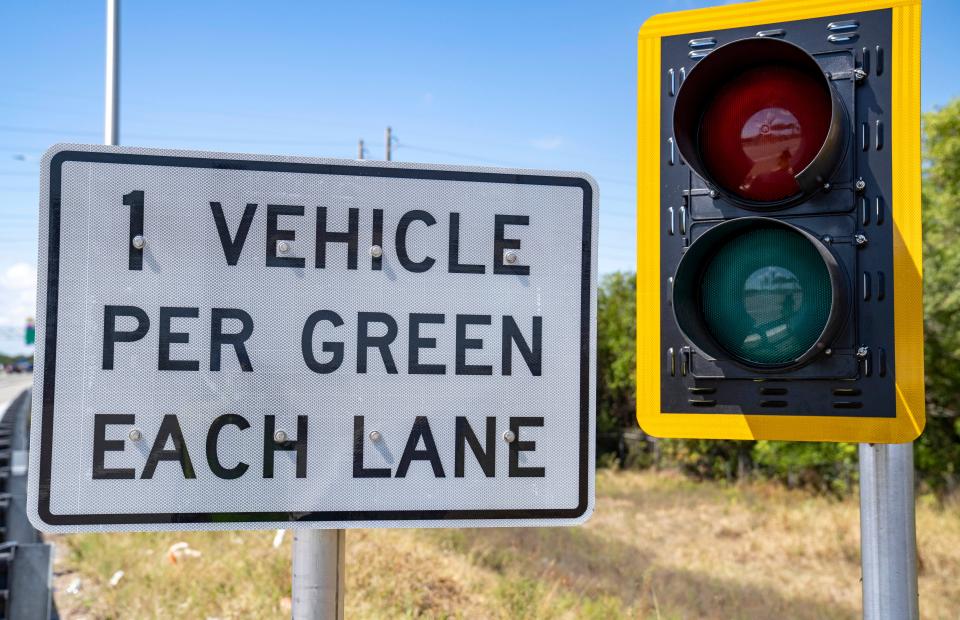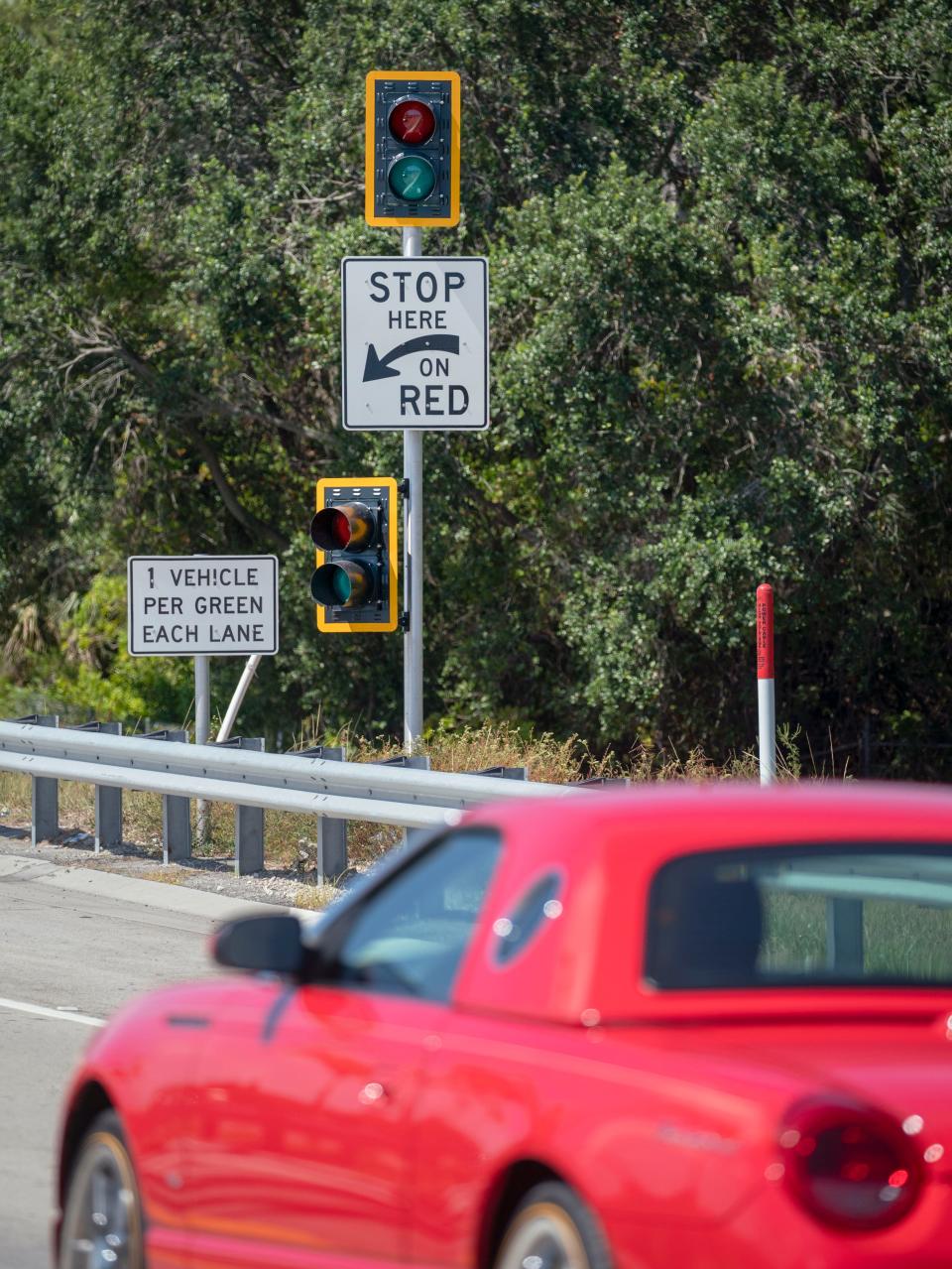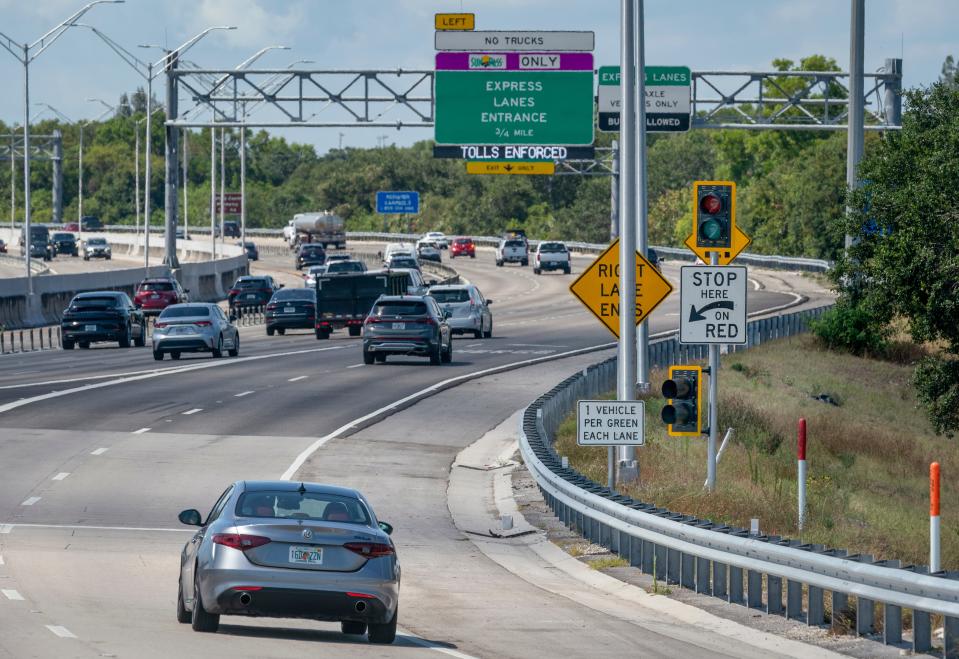Ramp signaling, also called metering, debuts at Glades Road I-95 interchange in Boca Raton
BOCA RATON — Drivers entering Interstate 95 from Glades Road in Boca Raton may now have to stop at a red light.
Why?
The Florida Department of Transportation has implemented a new metering program, which is a traffic control signal that lets motorists know when they can enter the highway when activated.
The signals are being installed in southern Palm Beach and Broward counties as part of a system-wide approach to increase safety while addressing traffic congestion along the I-95 corridor, according to the FDOT. They’re meant to maintain consistent traffic flow and reduce crashes.
The move comes after Boca Raton’s diverging diamond interchange, which opened at the Glades Road and I-95 intersection last January.

What is ramp signaling?
Essentially, ramp signals are traffic lights that reduce congestion and monitor the flow of traffic onto a freeway. According to the FDOT, ramp signaling is an effective freeway management strategy that was first deployed in the 1960s and is more recently making its way across many other states. In Florida, the signals have been operating in Miami-Dade County for more than a decade.
As vehicles approach the entrance to the freeway, they’ll form a queue on the ramp behind a stop line where the traffic light, or ramp signal, is. Vehicles are then individually released onto the freeway, I-95 in this case, at a rate dependent on traffic volume and speed at the time.
Other states where ramp signaling, also called ramp metering, is in effect include California, New York, Pennsylvania, Georgia, Ohio and Arizona. The system is most popular in Los Angeles, San Francisco and Minneapolis, according to the U.S. Department of Transportation.

How does ramp signaling work?
When the signal is red, drivers are supposed to pull up to the white line on the pavement, before the “Stop here on Red” sign. This activates the ramp meter light.
Once the light turns green, one or two vehicles, as indicated by the signage on the ramp can proceed. They’ll then merge onto the interstate.
The FDOT encourages drivers to be patient during the process. “A short wait at the ramp will help reduce your travel times and improve your commute along the mainline,” the FDOT website states.
Drivers who fail to obey the traffic signals are subject to being ticketed.

When will the ramp signal at I-95 and Glades Road be active?
When a ramp signal is first activated, there is a calibration period in order to allow the travelling public to familiarize with the operation while the FDOT analyzes the system’s performance for the first couple of months, FDOT Communications Manager Guillermo Canedo said. The signaling system at the I-95 and Glades Road ramp is currently activated for a static period during the peak travel hours of 7 to 9 a.m. and 4 to 6 p.m.
After this initial analysis period, the ramp signals will transition to a dynamic mode that will only activate during active congestion periods on the I-95 mainline, Canedo said. FDOT officials plan to install 28 ramp signals this year.
RELATED: Officials hope road widening, micro-mobility ideas can address South County traffic issues
"Safety is the top priority for the Department and embedded in all we do," Canedo said. "Ramp signals are one of various solutions FDOT is employing to improve traffic safety and mobility in SE Florida."
To date, according to the FDOT, ramp signals have improved mobility and travel speeds by 16% during evening rush hour and 11% during morning rush hour.
RELATED: Palm Beach County's first 'diverging diamond' interchange is almost here. How will it work?
Jasmine Fernández is a journalist covering Delray Beach and Boca Raton for The Palm Beach Post. You can reach her at jfernandez@pbpost.com and follow her on X (formerly Twitter) at @jasminefernandz. Help support our work. Subscribe today.
This article originally appeared on Palm Beach Post: Metering debuts at I-95 entrance at Glades Road. How does it work?

